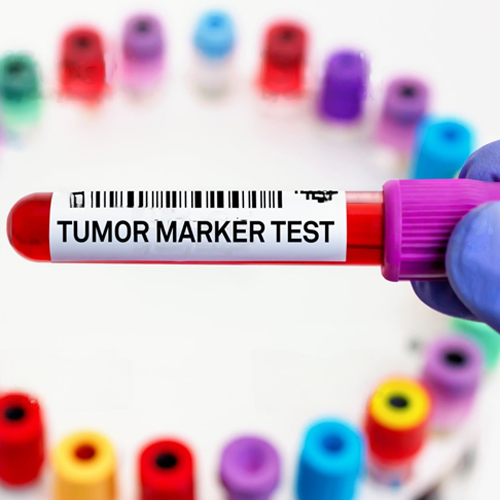
In many cases, the elevation of tumor marker levels occurs several months before the appearance of the first symptoms of tumors, as determined by conventional diagnostic methods (X-ray, ultrasound, MRI).
Who are tumor markers prescribed for?
First and foremost, tumor markers are prescribed for individuals predisposed to developing a tumor. In this case, a blood test for tumor markers becomes the first step in preventing its development.
The analysis is also conducted on patients who have been diagnosed with a tumor. For them, such an analysis serves as a means of monitoring the dynamics of cancer development and the effectiveness of its therapy.
Different markers characterize different types of tumors. In some cases, several markers characterize the same type of cancer. To increase the reliability of the results, simultaneous analysis of multiple tumor markers is performed. Additionally, the same tumor marker may indicate multiple forms of cancer.
In the laboratory of our Center, it is possibleto detect tumor markers:
- CEA (Carcinoembryonic Antigen) - assesses the risk of lung cancer, colorectal cancer, stomach cancer, ovarian cancer, as well as breast cancer, thyroid cancer, or pancreatic cancer.
- AFP (Alpha-Fetoprotein) - used to detect liver cancer, testicular teratocarcinoma, diagnose poorly differentiated tumors and metastases of tumors in various locations in the liver.
- HCG+B (Beta Human Chorionic Gonadotropin + Beta-Subunit) - this marker is used not only for pregnancy diagnosis and monitoring, but also for diagnosing tumors that produce chorionic gonadotropin (e.g., choriocarcinoma, seminoma, pancreatic cancer, epithelial ovarian cancer, colorectal cancer, and others).
- PSA, FPSA, FPSA/PSA ratio (Prostate-Specific Antigen) - used for early diagnosis of adenoma and inflammatory diseases of the prostate gland, early detection of prostate cancer, assessing the effectiveness of drug therapy for prostate cancer and monitoring the results of surgical treatment, as well as for timely detection of prostate cancer recurrence after surgical treatment.
- CA 125 (CA-125) - a tumor marker found in ovarian epithelial cells and, in normal conditions, in endometrial cells, peritoneum, pleura, pericardium, and testes. High concentrations of this glycoprotein in the blood indicate the oncological transformation of the ovaries and some other organs and tissues (endometrium, colon, lung, breast, pancreas).
- HE4 (Human Epididymis Protein 4) is an oncological marker that can be used for the diagnosis, prognosis assessment, and treatment monitoring of ovarian and endometrial cancer.
- ROMA(when ordering HE4 and CA 125) is an indicator calculated based on the levels of the oncological markers CA 125 and HE4, as well as the menopausal status of the patient. It is used to determine the risk of ovarian cancer in women with pelvic masses, distinguishing between high and low risk.
- СА 15-3 (RA 15-3) is an oncological marker for breast cancer. It is used to monitor the effectiveness of breast cancer treatment, detect disease recurrence, and differentially diagnose benign and malignant breast tumors.
- S100 is a marker for potential brain damage and malignant melanoma.
- СА 19-9 (RA 19-9) is an oncological marker that is elevated in patients with tumors of the gastrointestinal tract, particularly the pancreas.
- CA 72-4 is an oncological marker produced by malignant tumors of glandular tissue, such as gastric carcinoma, colorectal cancer, or ovarian cancer.
- CA 21-1 (CYFRA) is an oncological marker used for the diagnosis, prognosis assessment, and treatment monitoring of non-small cell lung cancer, as well as some other malignant neoplasms.
How to interpret the obtained results?
These indicators are used to monitor the condition over time, so it is important to know their baseline levels. There are no universal tumor markers that indicate a specific localization of the pathological process, so they cannot be used as a standalone diagnostic method.
Tumor marker values can be elevated during pregnancy, acute and chronic illnesses, inflammatory processes, injuries, hormonal imbalances, so they cannot be interpreted definitively. In such cases, the treating physician takes into account not only the direct increase in tumor marker levels but also the degree of this increase, clinical symptoms, the correlation with the results of other diagnostic methods, and the results of laboratory tests. Based on the entire diagnostic picture, the cause of the pathological changes is determined.
In our Center, you can undergo a comprehensive analysis as part of the diagnostic laboratory profile "Oncological Examination":
- Oncological Screening (Men)
- Oncological Screening (Women)



